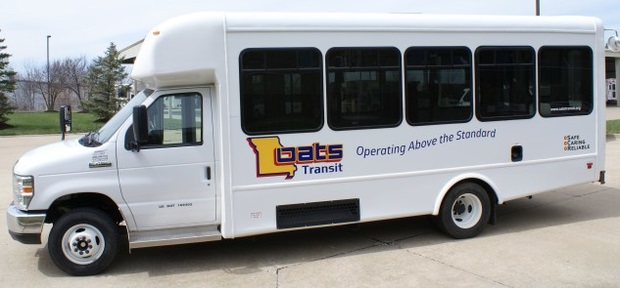Walmart or Doctor? Rural Transit Faces Tough Choices in Shutdown
- Seniors, disabled, low-income rely on small, rural transit
- Funds are there for transit, but federal workers furloughed
A rural transit provider serving 87 Missouri counties faces a stark choice next week if the federal government shutdown drags on.
Low-income, senior and disabled residents depend on it to get to the grocery store, work and doctors. But soon, the first two types of trips may have to be curtailed to prioritize getting people to medical appointments, Dorothy Yeager, executive director at OATS Transit, one of the country’s largest rural transit providers, said in a telephone interview.
“So we’ll take you to the doctor, but you can’t eat,” Yeager said.
State transportation departments and the agencies that rely on them are facing a pinch as the government shutdown goes into the middle of a third week. The money is there—there’s just nobody to dole it out. Grants for small and rural transit are funded through the Highway Trust Fund, which is still collecting gasoline taxes during the government shutdown. But the Federal Transit Administration workers who distribute the transit funds from that account are furloughed.

“We’re not going to shut completely down, but we’re going to have to reduce service if these funds aren’t loosened up,” Yeager said.
Rural Transit, Federal Dollars
The shuttle services provided by groups like OATS or by TransIT of Frederick, Md., are funded in part by formula grants for rural areas, seniors and persons with disabilities. The providers spend money on drivers, fuel, and other expenses and then seek reimbursement from their state Transportation Departments. The state agencies, in turn, file funding requests with the FTA.
But there’s a queue for reimbursement, so states that had reached the top of the list when the government shut down before Christmas may be the most in need.
State departments of transportation overall spend more on public transit than the federal government does, but some states are more dependent than others on federal funds, Jim Tymon, executive director at the American Association of State Highway and Transportation Officials, told reporters in a phone interview.
During a shutdown, some states are able to move pots of money around to keep transit programs afloat while they await eventual federal reimbursement. Other states are not in position to shift money from other accounts, or can only do so for a limited time, Tymon said.
West Virginia, for example, has already moved funds around to help rural transit providers, said Scott Bogren, executive director of the Community Transportation Association of America.
‘They Can’t Work’
TransIT in Frederick, which serves about 2,100 people a day, would face an impact by the end of the first week of February, when it would normally expect to have cleared its second quarter expenses, Nancy Norris, director of Transit Services of Frederick County, said in an interview.
The average rider of her system is between the ages of 18 and 35, pays the $1.50 per ride to get to work, and earns about $12,000 a year, Norris said.
“You can’t just take a cab or Uber if that is your income,” said Norris. “Remove public transportation and they can’t work.”
She expects the county could operate from reserves and other funds for a while after that first week of February.
“But if we’re talking months and months and months, then jurisdictions throughout the nation will have to reevaluate,” she said.
To contact the reporter on this story: Shaun Courtney in Washington at scourtney@bgov.com
To contact the editors responsible for this story: Paul Hendrie at phendrie@bgov.com; Jonathan Nicholson at jnicholson@bgov.com; Bernie Kohn at bkohn@bloomberglaw.com